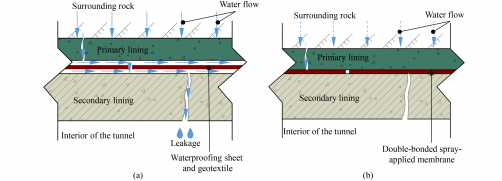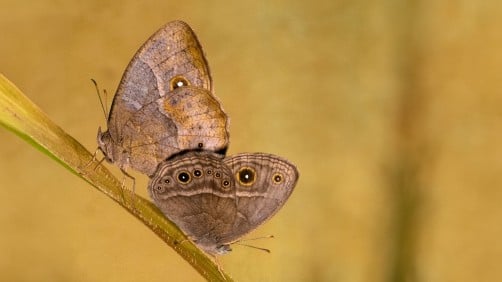In a significant advancement for tunnel engineering, researchers have introduced a novel waterproof-drainage system designed to combat water leakage, a persistent issue that compromises tunnel integrity and safety. This innovative approach, detailed in the study titled “A Novel Tunnel Waterproof-Drainage System Based on Double-Bonded Waterproofing Materials and Its Seepage Characteristics,” was developed by a collaborative team from various institutions, including Xiaohe SUN and Chenghua SHI from Central South University, Guoqing XIAO from PowerChina ZhongNan Engineering Corporation Limited, Yangyang GE from Beijing Oriental Yuhong Waterproof Technology Co. Ltd., and Chengyong CAO from Shenzhen University.
Traditional waterproofing systems often rely on non-bonded sheets that fail to adhere to the primary and secondary linings of tunnels, allowing groundwater to infiltrate between the layers. This can lead to accelerated aging of tunnel linings and pose serious risks to structural safety. The new system employs double-bonded spray membrane waterproofing materials, which offer superior waterproofing and load-bearing capabilities. However, these materials have historically limited drainage options due to their design, prompting the need for innovative solutions.
To tackle these challenges, the research team proposed a system based on the concept of “localized drainage and pressure reduction.” The design encompasses four critical components. The first is the waterproof system, which utilizes a double-bonded spray membrane situated between the primary and secondary linings, excluding the arch section, along with secondary lining concrete. The second component consists of an upper circumferential drainage system, featuring plastic drainage sheets located between the membrane and primary lining, along with transversal guide pipes that direct groundwater to longitudinal pipes and eventually to a central ditch.
The third element is the bottom circumferential drainage system, including bottom drainage blind pipes that collect surrounding rock groundwater, complemented by vertical guide pipes to channel water towards the central ditch. Lastly, the longitudinal drainage system connects transversal drainage to discharge groundwater outside the tunnel through longitudinal blind pipes and side ditches.
To assess the effectiveness of this system, researchers conducted numerical simulations, specifically steady-state seepage analysis. The findings revealed that the water pressure on the secondary lining demonstrates distinctive distributions: circumferentially, it appears “mushroom-shaped,” decreasing from the tunnel’s arch top to the bottom, while longitudinally, it exhibits a “wave-shaped” profile, with the lowest pressure at the circumferential drainage and the highest between the two drainage systems.
Comparative tests under standard conditions, including a water head of 160 m and rock permeability of 10−6 m/s, indicated that the maximum water pressure on the secondary lining of the novel system is 0.6 MPa. This figure represents a 65% reduction compared to fully encapsulated waterproofing systems, which recorded pressures of 1.7 MPa, and is 30% lower than traditional drainage systems at 0.86 MPa.
The applicability analysis of the new system confirms its effectiveness in reducing static water pressure by at least 40% across various groundwater environments. In ultra-low permeability strata, characterized by a permeability of 10−7 m/s, the reduction can reach approximately 85%. The system’s adaptability is further enhanced, as bottom blind pipes are particularly effective in high-permeability rock, while upper drainage sheets excel in low-permeability conditions.
The comprehensive study, “A Novel Tunnel Waterproof-Drainage System Based on Double-Bonded Waterproofing Materials and Its Seepage Characteristics,” is available for further reading. The research not only offers a promising solution to a long-standing problem in tunnel engineering but also enhances the safety and longevity of tunnel infrastructure. For more details, the full text can be accessed at: https://doi.org/10.1007/s11709-024-1100-4.







